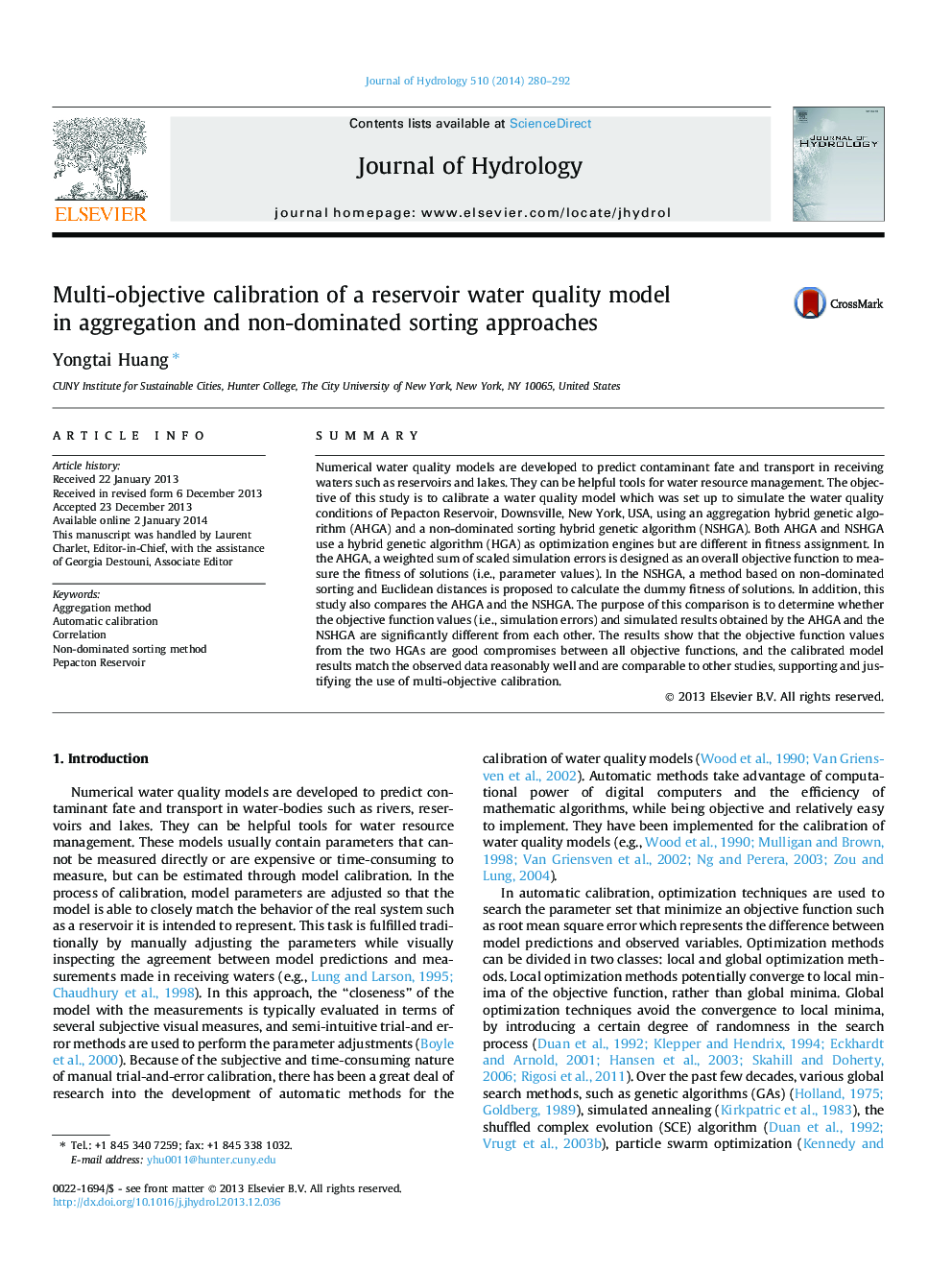| کد مقاله | کد نشریه | سال انتشار | مقاله انگلیسی | نسخه تمام متن |
|---|---|---|---|---|
| 6413203 | 1629938 | 2014 | 13 صفحه PDF | دانلود رایگان |
- This work is focused on the calibration of a reservoir water quality model.
- A non-dominated sorting hybrid genetic algorithm (NSHGA) was proposed.
- An aggregation hybrid genetic algorithm (AHGA) was implemented.
- The model was improved significantly on simulating chlorophyll a.
- Model performance on the simulations of other variables was also improved.
SummaryNumerical water quality models are developed to predict contaminant fate and transport in receiving waters such as reservoirs and lakes. They can be helpful tools for water resource management. The objective of this study is to calibrate a water quality model which was set up to simulate the water quality conditions of Pepacton Reservoir, Downsville, New York, USA, using an aggregation hybrid genetic algorithm (AHGA) and a non-dominated sorting hybrid genetic algorithm (NSHGA). Both AHGA and NSHGA use a hybrid genetic algorithm (HGA) as optimization engines but are different in fitness assignment. In the AHGA, a weighted sum of scaled simulation errors is designed as an overall objective function to measure the fitness of solutions (i.e., parameter values). In the NSHGA, a method based on non-dominated sorting and Euclidean distances is proposed to calculate the dummy fitness of solutions. In addition, this study also compares the AHGA and the NSHGA. The purpose of this comparison is to determine whether the objective function values (i.e., simulation errors) and simulated results obtained by the AHGA and the NSHGA are significantly different from each other. The results show that the objective function values from the two HGAs are good compromises between all objective functions, and the calibrated model results match the observed data reasonably well and are comparable to other studies, supporting and justifying the use of multi-objective calibration.
Journal: Journal of Hydrology - Volume 510, 14 March 2014, Pages 280-292
